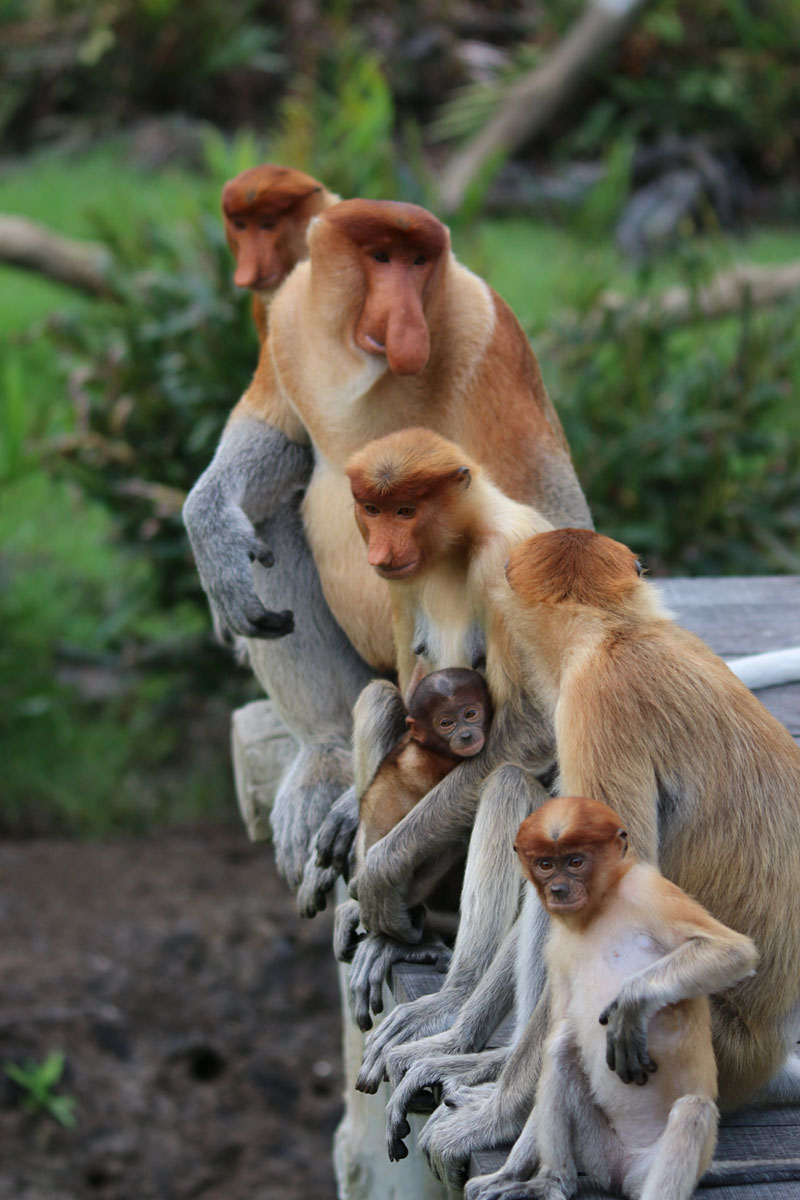Explaining why male proboscis monkeys have such large noses
Is big beautiful? In the case of the male proboscis monkey, it appears to be all in the nose.
In new research published in Science Advances , an international research team has found evidence supporting both male-male competition and female choice as factors in the evolution of the enlarged male nose.
What's more, nasal enlargement modifies the male's call, possibly as an audible clue to attractiveness. These results are the first in primate research that evaluate unique masculine characteristics with morphology, acoustics, and socioecology.
"In animals, males often have exaggerated physical traits as a consequence of sexual selection. But you can't get any odder than the long, drooping nose of the proboscis monkey," explains Hiroki Koda of Kyoto University's Primate Research Institute and first author of the study. "And although this unique feature has long been admired, explanations for its evolution and its ecological roles had remained unclear."
Among primates, larger noses with prominent sexual dimorphism are only seen in this species. Theoretically, exaggerated male traits could serve as advertising competitiveness to other males or to attract females.
To test their hypothesis, the team conducted morphological measurements and behavioral observations on monkeys both in captivity and in their natural habitat.
They tested correlations between features such as body mass, facial characteristics, testicular volume, vocalizations, and number of harem females in the observed groups.
"We found strong correlation between the size of an enlarged nose with physical strength -- indicated by body mass -- and reproductive ability -- indicated by testis size," describes Koda. "The number of harem females was larger as well. To put it simply, the large nose appears to act as a 'badge' of strong male characteristics."
Their acoustic analyses also suggested that nasal enlargement systematically modified the resonance properties of male vocalizations, making their voices lower when attracting a female.
"We were quite surprised to find such a clear relationship between nose size and attractive characteristics," says lead author Ikki Matsuda. "Not only did we find physical correlation, our results showed correlation to the auditory component in attracting a mate."
The group expects their results to be a promising contribution to evolutionary theory, with new perspectives on audiovisual coevolution of exaggerated male traits, sure to be of broad relevance to the field of biology.
They hope to expand their research to assess the cognition of males and females for enlarged noses, and to determine how an enlarged male nose ecologically contributes to mating success in the social systems of proboscis monkeys.

Proboscis monkey males weigh about 20 kilograms, while females wight roughly half that. The long nose is a unique quality found only in males. (Kyoto University / Matsuda Lab)
Paper information
Hiroki Koda, Tadahiro Murai, Augustine Tuuga, Benoit Goossens, Senthilvel K.S.S. Nathan, Danica J. Stark, Diana A. R. Ramirez, John C. M. Sha, Ismon Osman, Rosa Sipangku2, Satoru Seino and Ikki Matsuda (2018). Nasalization by Nasalis larvatus: Larger noses audiovisually advertise conspecifics in proboscis monkeys. Science Advances, 4(2), eaaq0250.





